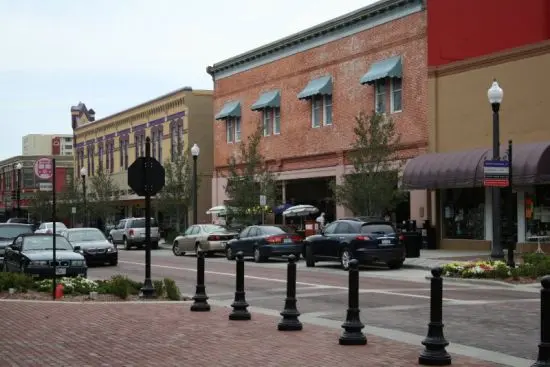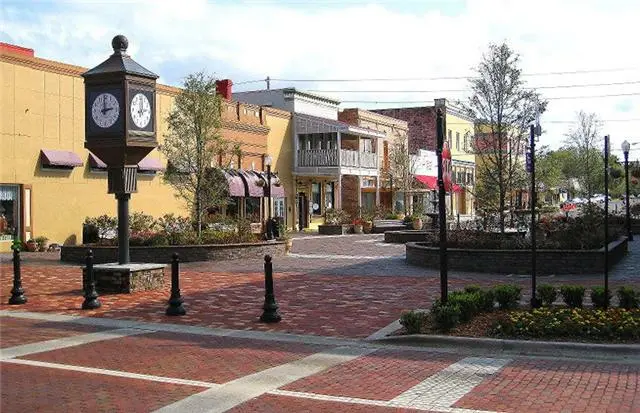The three block area of downtown Sanford has more than 20 buildings listed in the National Register of Historic Places. Most of the buildings were constructed in the late 1800s, and the newest one was built in 1923. All of the buildings in Sanford’s downtown historic district are remarkably well preserved.
The residential area directly adjacent to downtown Sanford is also designated as an historic district, with many early twentieth century houses listed in the National Register of Historic Homes.
Sanford has a turbulent history dating from the 1830s, with periods of prosperity alternating with prolonged periods of economic hardship.
Like many Florida towns, Sanford was built around a fort constructed during the Second Seminole War. Fort Mellon was constructed at the site of Camp Monroe in 1837, named after Captain Charles Mellon, who died defending the camp. Pioneer settlers building homes nearby called their community Mellonville.
As a port for commercial steamboat traffic on the St. Johns River in the 1840s, Mellonville was the major distribution point for building materials and other goods needed by settlers throughout Central Florida.
Henry Sanford came to the area following the Civil War.
“When Henry Sanford came here in 1870, he was looking for an investment during the Reconstruction period, and he had been advised that Florida was a good investment,” says Alicia Clarke, curator of the Sanford Museum. “He was from Connecticut, and he was a diplomat who had lived overseas most of his life. He landed at Mellonville, found out there was a large former Spanish land grant to the west of Mellonville, which he purchased for eighteen thousand dollars. It was over twelve thousand acres, and he founded the town of Sanford, which was a planned city drawn out on paper.”
As a port city and by 1880 a railroad terminal, Sanford prospered in the late nineteenth century. As a transportation hub for several decades, Sanford was actually a more prominent and prosperous town than its neighbor to the south, Orlando. Sanford called his city “The Gateway to South Florida.”
“We had a thousand citizens very early on, which for that time period was a lot,” Clarke says. “We became very quickly the largest inland city in Florida, and also very quickly we were the fourth largest city in Florida.”
After flourishing initially, the city of Sanford faced a series of economic ups and downs.
In September 1887, a bakery in downtown Sanford caught fire and destroyed much of the town. Brick buildings were constructed to replace the burnt wooden structures, and many of them still stand.
The Big Freeze of 1894-95 destroyed the citrus industry in Sanford, but many farmers turned to celery as their primary crop. By the early twentieth century Sanford was exporting $8 million worth of celery per year, earning the nickname “Celery City.”
Henry Sanford lost his fight to have the Orange County seat moved from Orlando to Sanford, but when Seminole County was created in 1913, Sanford was named its county seat.
“Things changed when the automobile was invented,” says Clarke. “Henry Sanford had no way of knowing that was going to happen. The riverboat ceased to be quite as important.”
The Great Depression impacted Florida several years earlier than the rest of the country, and Sanford was nearly crippled. The city was revitalized in 1942 when the Navy built an air station in Sanford, but the town suffered when the station moved to Orlando in 1968.
Historic preservation efforts inspired by the bicentennial of the United States in 1976 resulted in the gradual revitalization of Sanford.
“A lot of comminutes of our size were trying to find something to do to revive interest in their local history,” Clarke says. “What they did downtown was to put the commercial district on the National Register. They hired some researchers to go and research the oldest buildings downtown, and they were submitted to Washington, and put on the National Register. Then a local district was created around those buildings to protect the entire downtown commercial area through special zoning and ordinances. That really started the thinking of revitalizing downtown.”
Historic preservation efforts in Sanford continue to the present. The results provide a glimpse into Florida’s past.

